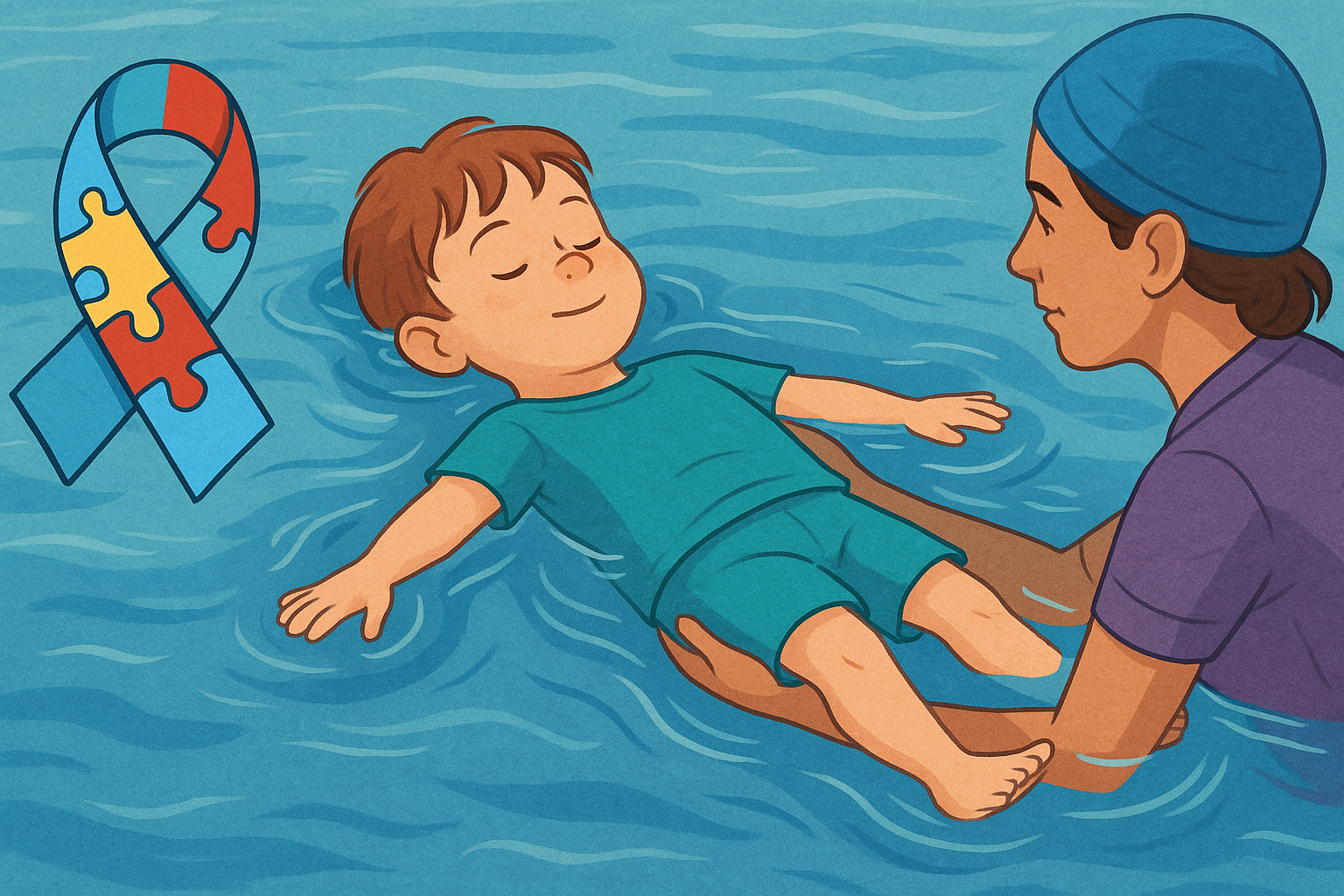One Float Could Save a Life
Swim Lessons That Protect Autistic Children

Jessica’s heart stopped when she noticed the back door ajar and her toddler, Ethan, nowhere in sight. She sprinted outside to find Ethan, who is on the autism spectrum, standing at the edge of the backyard pool, fixated on the sparkling water. In an instant, he stumbled forward and fell in. But instead of sinking under panic, Ethan did something miraculous for a 2-year-old – he flipped onto his back, floating calmly as he had been taught. Jessica scooped him out within seconds, tears of relief in her eyes. That day, the infant survival swim lessons Ethan had taken proved to be a literal lifesaver.
Scenarios like this are more common than many realize. Drowning is the leading cause of accidental death for children ages 1–4, according to the CDC, and children with autism face an even higher risk – one study published in the American Journal of Public Health found they are 160 times more likely to die from drowning than their neurotypical peers. This article will explore why autistic children have unique drowning risks and how infant survival swim lessons (especially skills like the back-float) can dramatically improve swim safety. We’ll also look at how these lessons build confidence and provide a calming outlet for kids with sensory challenges. Our goal is to speak compassionately and candidly to parents about early intervention, safety, and empowerment.
Why Autistic Children Face Unique Drowning Risks
Parents of autistic children know their little ones experience the world differently – and water safety is no exception. Several autism-related tendencies can unfortunately increase drowning risk:
Wandering or Elopement: Roughly half of children with autism will wander from caregivers at some point. The National Autism Association reports that nearly 50% of these children are drawn specifically to water.
Sensory Processing Differences: Water is a common sensory fascination for autistic children. The visual patterns, pressure, and sound of splashing can be calming – or overstimulating – but either way, it often overrides their awareness of danger.
Low Danger Awareness: Autistic children often have a limited understanding of hazards. They may jump into a body of water joyfully without recognizing the risk.
Communication Challenges: Some children with autism may not call for help or may struggle to follow verbal instructions if they find themselves in distress.
These factors combined help explain why drowning is such a disproportionately high cause of accidental death for autistic children. But there is hope.
How Infant Survival Swim Lessons Can Save Lives
Infant survival swim lessons teach babies and toddlers to perform one critical skill: rolling onto their back to float and breathe if they fall into water. Even children as young as 6 months old can learn this with gentle, consistent instruction.
Instead of focusing on swim strokes, these lessons teach self-rescue. The key technique is the back-float, which keeps the child’s face above water, conserving energy and allowing them to breathe until help arrives.
For toddlers who can crawl or walk, the next step is “swim-float-swim,” where the child paddles a short distance, floats to rest and breathe, then continues.
The American Academy of Pediatrics recommends starting swim lessons as early as age 1, particularly for children with a higher drowning risk. And research published in Pediatrics shows that formal swim instruction can reduce the risk of drowning by 88% among 1- to 4-year-olds.
Tailored Instruction for Autistic Children
Survival swim programs often adapt their methods to accommodate sensory needs and communication styles. Instructors use repetition, visual cues, and consistent routines, which are especially beneficial for autistic children.
Calm, one-on-one environments allow for gradual desensitization to the water. Many parents report that their child, who was initially fearful or overstimulated, came to love the routine and security the lessons provided.
These lessons also empower children. Mastering floating builds independence, confidence, and trust in their own bodies. That empowerment can extend beyond the pool.
Water as Therapy: Regulating Emotion and Sensory Input
The water itself can be healing. Swimming offers deep pressure and rhythmic movement, which many children on the spectrum find grounding. Some parents describe swim days as a “reset button” – children are calmer and more regulated afterward.
With proper instruction, what begins as a safety precaution can become a joyful ritual. Many autistic children grow to love the water, once it’s made safe and structured.
One Float at a Time
The journey of parenting a child with autism is filled with unique joys and challenges. Water safety is one area where early action can truly change everything. Infant survival swim lessons equip your child with a life-saving skill, and provide peace of mind for you.
Whether your child is 6 months or 3 years old, it’s never too early to begin. Teaching them to float is more than a lesson – it’s a gift.
Need Support?
Have questions about infant survival swim lessons or want guidance on getting started? The Swim Company is here to help. Whether you’re curious about the back-float technique or want to find the right program for your little one, we’re just a call or email away.
📞 (888) 200-8553
📧 jessica@theswimcompany.net
You don’t have to navigate water safety alone — The Swim Company is proud to support families across Temecula, San Diego, and beyond with trusted, compassionate swim instruction. Let’s keep your child safe and confident, one float at a time.
